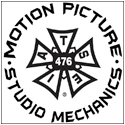
Entertainment lawyer
Travis Life explains how
courts settle disputes
about copyrighted material
appearing in films
without legal clearance
Filmmakers are usually so focused on the production of their story that sometimes they miss the little things contained in their work.
These “little things” — posters, paintings, graffiti, etc. — can cause big problems if they appear in the film without the owner’s permission.
Hence the most costly (and often dreaded) word in filmmaking: “Clearance”
Take the recent case of a graffiti artist suing HBO. Street artist Itoffe R. Gayle filed suit when he saw a glimpse of his work in the television show Vinyl.
The work contained the phrase “art we all” painted on a dumpster and appeared for two to three seconds in the background of a single scene. So he sued HBO claiming that the use was calculated and coordinated to exploit and capitalize on the fame of his work. Gayle v. Home Box Office Inc., 2018 U.S. Dist. LEXIS 73254.
The Southern District of New York found that the brevity of the use negated any harm to Gayle and dismissed his copyright and trademark infringement claims.* For the copyright action, the Court examined the length of time during which the work was viewable and the visibility of the graffiti to determine that the harm was de minimis.

The Court analyzed the lighting, camera angles and focus on the work to determine if the “average lay observer” would see the work to raise the harm for Gayle. The Court similarly reviewed the scene to determine if there was a likelihood of confusion as to whether Gayle sponsored or endorsed the program Vinyl for Gayle’ trademark claim.
Here, the Court stated that the street art was “hard enough to notice when the video is paused at the critical moment, that the likelihood of confusion element could not be met.”**
Had the work been used in a different manner, such as pictured alone, in a close up, or focused on during the scene, then the Court may have decided against HBO. However, the short, blurred use saved the day for the cable network.
That is not to say that HBO did not have to pay for its failure to clear Gayle’s work.
No doubt the attorneys’ fees to litigate this matter were well into the tens of thousands of dollars. And this was without extensive litigation, which would have cost well into the six figures, a much more expensive proposition than a second review for clearance or an E & O policy.
The lesson here: Do an extensive clearance review on your film prior to broadcast or release and make sure you E & O policy is current.
*Gayle also had state law claims which were dismissed on the same grounds.
**Gayle, 2018 U.S. Dist. at *3.
About the author
Travis Life is a partner at the entertainment, media, and intellectual property law firm of Leavens, Strand & Glover, LLC. Mr. Life advises artists and businesses on legal aspect of the entertainment industry. This article was researched and edited by Marena Diaz, law clerk at Leavens, Strand & Glover, LLC.

















